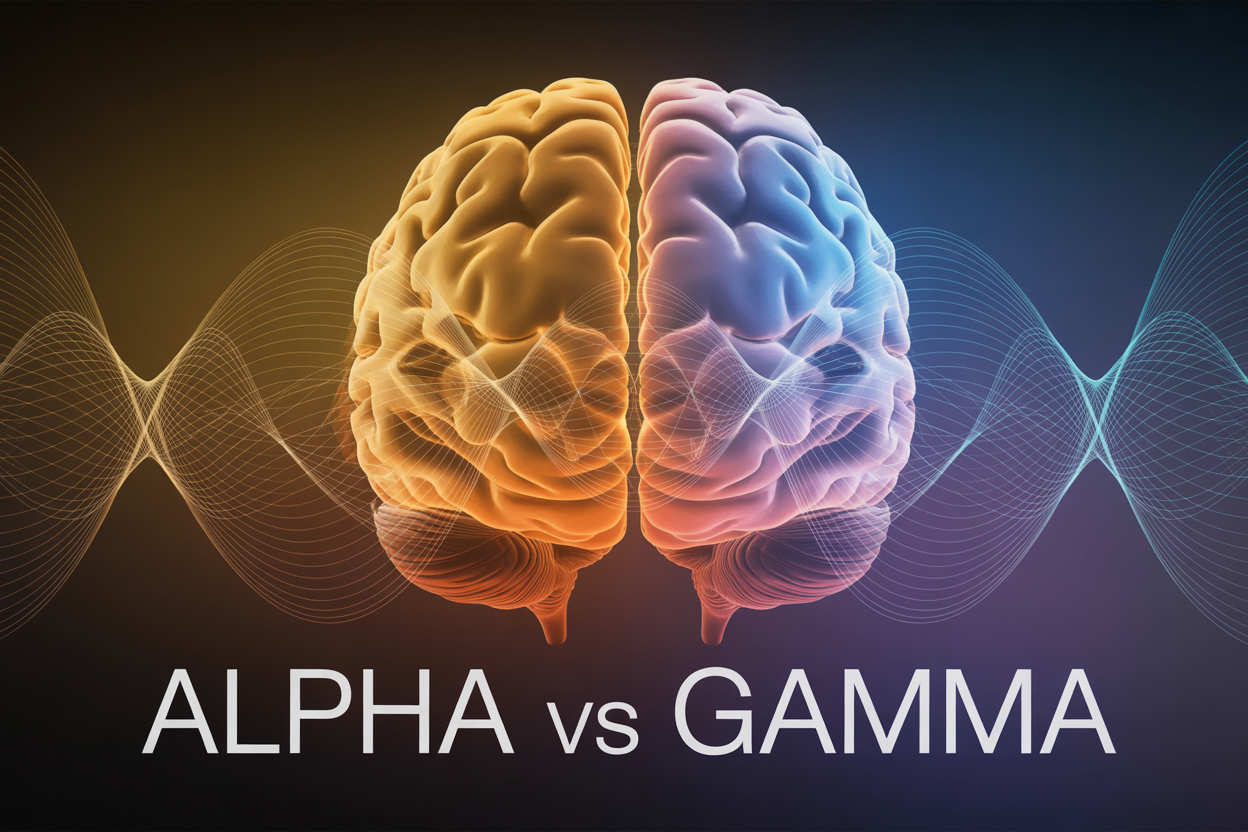Understanding the 10 Vayus and Their Chakra Connections: Your Complete Guide to Vital Energy
The 10 vayus chakra connections form the foundation of your body’s vital energy system, controlling everything from your breath to your digestion. These powerful life force currents work directly with your chakras to keep you healthy, balanced, and energized.
This guide is perfect for yoga practitioners, energy healers, and anyone curious about how vital airs move through their body. You’ll discover practical ways to work with these ancient wisdom teachings in your modern life.
We’ll start by exploring the five primary vayus that control your most essential functions, then dive into the five secondary vayus for advanced energy management. You’ll also learn how to spot imbalanced vayus symptoms in your daily routine and discover simple harmonize vayus techniques you can use right away.
Ready to unlock the secrets of your body’s energy highways? Let’s explore how these invisible forces shape your wellbeing every single day.
Understanding the Vital Energy System in Your Body

How Prana Flows Through Your Physical and Energetic Bodies
Your body operates like an intricate energy highway system, with prana serving as the vital force that keeps everything running smoothly. Think of prana as the electricity powering your home – when it flows freely, all your systems work perfectly, but blockages create problems throughout the entire network.
The vital energy system body consists of multiple layers working together. Your physical body houses the dense, material aspects, while your energetic body contains the subtle channels called nadis – imagine them as invisible rivers carrying life force to every cell. The main highway, called the sushumna nadi, runs along your spine, connecting all seven major energy centers.
This energy doesn’t just randomly bounce around inside you. It follows specific pathways and serves distinct purposes through the 10 vayus chakra connections. Each vayu acts like a specialized worker, handling different bodily functions from breathing and circulation to digestion and elimination.
When prana moves freely through your system, you feel vibrant, healthy, and mentally clear. Your vayus life force maintains perfect balance between all physiological processes. However, stress, poor lifestyle choices, emotional trauma, or physical tension can create blockages in these energy pathways, leading to fatigue, illness, and emotional imbalance.
The beauty of this system lies in its intelligence – your body naturally knows how to direct energy where it’s needed most. Understanding this flow helps you work with your innate healing mechanisms rather than against them.
The Ancient Wisdom Behind Vayu Classification
Ancient yogis spent thousands of years mapping the human energy system with remarkable precision. They discovered that life force doesn’t just exist as one uniform energy – it actually divides into ten distinct currents, each with unique characteristics and responsibilities. This classification system, developed through deep meditation and careful observation, remains one of the most sophisticated understandings of human vitality ever created.
The five primary vayus handle your most essential functions. Prana vayu governs your heart and lungs, keeping you breathing and your blood pumping. Apana vayu manages elimination and reproduction, clearing waste and creating new life. Samana vayu runs your digestive fire, transforming food into energy. Udana vayu controls speech, expression, and upward-moving energy. Vyana vayu circulates throughout your entire system, coordinating all other functions.
The secondary vayus fine-tune more specialized processes. These subtle energies control everything from blinking and yawning to joint movement and cognitive function. Ancient texts describe them with poetic precision – naga vayu causes burping and hiccups, while kurma vayu controls your eyelid movements.
This wasn’t just theoretical knowledge. Yoga masters used this understanding to develop specific practices targeting each vayu. They created breathing techniques, physical postures, and meditation methods designed to balance these energies and promote optimal health. Their insights formed the foundation for countless healing traditions that continue helping people today.
Why Balancing Your Vayus Transforms Overall Health
Your vayus work like a perfectly orchestrated symphony – when all instruments play in harmony, the music sounds beautiful. But if even one section falls out of tune, the entire performance suffers. This interconnectedness explains why balancing your vayus life force creates such profound health transformations.
Imbalanced vayus symptoms often show up in ways you might not expect. Digestive issues could stem from disturbed samana vayu. Chronic fatigue might indicate blocked vyana vayu circulation. Anxiety and shallow breathing typically point to prana vayu dysfunction. Sleep problems often trace back to udana vayu imbalances affecting your nervous system.
Traditional medicine tends to treat symptoms separately, but the vayu system reveals how everything connects. Your breathing patterns affect digestion. Your emotional state influences circulation. Your sleep quality impacts elimination. When you address the root energy imbalance, multiple symptoms often resolve simultaneously.
Balanced vayus create a cascade of positive effects throughout your entire being. Your immune system strengthens as energy flows freely to all organs. Mental clarity improves when your brain receives optimal prana supply. Emotional stability increases as your nervous system finds its natural rhythm. Physical vitality returns as cellular regeneration accelerates.
The most remarkable aspect is how quickly changes occur. Unlike pharmaceutical approaches that might take weeks to show effects, vayu balancing often produces noticeable improvements within days or even hours. This rapid response happens because you’re working with your body’s existing energy infrastructure rather than forcing external changes.
The Five Primary Vayus That Control Your Life Force

Prana Vayu – Master Your Breathing and Heart Function
Prana vayu governs the most essential life functions – your breath, heartbeat, and circulation in the chest region. This primary life force operates from your heart chakra (Anahata) and extends upward to influence your throat chakra (Vishuddha). When prana vayu flows smoothly, you experience steady breathing patterns, regular heart rhythms, and clear mental focus.
This vital energy directly controls your respiratory system, making every inhale and exhale possible. It also manages your cardiovascular function, ensuring oxygen-rich blood reaches every cell in your body. People with balanced prana vayu typically have strong lung capacity, stable emotions, and excellent stress management abilities.
Signs of imbalanced prana vayu include irregular breathing, heart palpitations, anxiety, and difficulty concentrating. You might notice shallow breathing during stressful situations or feel breathless even during light activities.
Apana Vayu – Optimize Elimination and Reproductive Health
Apana vayu manages all downward-flowing energy in your body, primarily operating through your root chakra (Muladhara) and sacral chakra (Svadhisthana). This powerful force controls elimination processes, reproductive functions, and the lower digestive tract. Your body’s ability to release toxins, waste products, and even emotional baggage depends on healthy apana vayu flow.
This energy system governs your kidneys, bladder, intestines, and reproductive organs. When functioning optimally, apana vayu ensures regular bowel movements, healthy menstrual cycles, and effective kidney function. It also plays a crucial role in childbirth and sexual health.
Disrupted apana vayu manifests as constipation, irregular menstruation, urinary issues, lower back pain, and difficulty letting go of negative emotions. You might experience bloating, digestive sluggishness, or feel emotionally stuck in certain situations.
Samana Vayu – Enhance Digestion and Metabolism
Samana vayu operates from your solar plexus chakra (Manipura), controlling the fire element within your body. This vital energy manages your digestive system, metabolism, and the transformation of food into usable energy. Think of samana vayu as your internal furnace that processes everything you consume – food, experiences, and emotions.
This energy system governs your stomach, liver, pancreas, and small intestine. Strong samana vayu creates efficient digestion, balanced blood sugar levels, and robust metabolic function. People with healthy samana vayu typically maintain stable energy levels throughout the day and process both nutrients and life experiences effectively.
Imbalanced samana vayu shows up as digestive issues, irregular appetite, blood sugar fluctuations, and difficulty processing emotions. You might experience bloating after meals, food sensitivities, or feel overwhelmed by daily stressors.
Udana Vayu – Strengthen Speech and Upward Energy Flow
Udana vayu governs upward-moving energy from your throat chakra (Vishuddha) to your crown chakra (Sahasrara). This ascending force controls speech, expression, memory, and your connection to higher consciousness. Your ability to communicate clearly, access creativity, and experience spiritual insights depends on balanced udana vayu.
This vital energy manages your throat, neck muscles, face, and brain functions. When udana vayu flows properly, you speak with clarity and confidence, remember information easily, and feel inspired by creative ideas. It also influences your sleep patterns and dream states.
Disrupted udana vayu creates communication difficulties, memory problems, insomnia, and feelings of spiritual disconnection. You might struggle with public speaking, forget important details, or feel creatively blocked.
Vyana Vayu – Improve Circulation and Nervous System Function
Vyana vayu permeates your entire body, connecting all energy centers and ensuring smooth communication between your chakras. This all-encompassing force manages circulation, nervous system function, and the coordination of all other vayus. Think of vyana vayu as the conductor of your body’s energy orchestra, ensuring every system works in harmony.
This vital energy controls your peripheral circulation, lymphatic system, and nervous system pathways. Balanced vyana vayu creates excellent coordination, strong immunity, and seamless energy flow throughout your body. People with healthy vyana vayu typically have good reflexes, recover quickly from illness, and maintain emotional stability.
Imbalanced vyana vayu manifests as poor circulation, nervous system disorders, coordination problems, and general fatigue. You might experience cold hands and feet, muscle tension, or feel energetically scattered and unfocused.
The Five Secondary Vayus for Advanced Energy Management

Naga Vayu – Reduce Hiccups and Restore Digestive Balance
Naga Vayu operates primarily in your digestive system, managing the upward movement of gases and controlling involuntary reflexes like hiccups and burping. This secondary vayu energy management system connects directly to your Solar Plexus Chakra (Manipura), where digestive fire burns brightest.
When Naga Vayu flows smoothly, your body naturally releases excess gas through controlled belching, preventing uncomfortable bloating and painful hiccups that can disrupt your entire day. This vital air also regulates the sphincter muscles in your esophagus, creating a natural barrier that prevents acid reflux and maintains proper digestive rhythm.
Signs of imbalanced Naga Vayu include persistent hiccups, excessive gas retention, bloating after meals, and frequent digestive discomfort. You might notice these symptoms worsen during stressful periods or after eating too quickly, as emotional tension directly affects this vayu’s natural flow.
Kurma Vayu – Protect Your Eyes and Enhance Vision
Kurma Vayu governs the muscular movements of your eyelids and controls the blinking reflex that keeps your eyes moist and protected. This subtle energy connects to your Third Eye Chakra (Ajna), supporting both physical vision and inner perception.
Your eyes blink approximately 15,000 times daily, and Kurma Vayu orchestrates this automatic process while maintaining proper tear distribution across your corneas. This vayu also influences the tiny muscles that adjust your pupil size in response to changing light conditions, protecting your delicate retinal tissues from damage.
When Kurma Vayu becomes disturbed, you experience dry eyes, excessive tearing, involuntary eye twitching, or difficulty adjusting to bright lights. Computer users often develop Kurma Vayu imbalances due to reduced blinking rates during screen time, leading to digital eye strain and vision problems.
Krikara Vayu – Prevent Sneezing and Boost Immunity
Krikara Vayu manages your body’s protective reflexes, particularly sneezing, which serves as your respiratory system’s first line of defense against irritants and pathogens. This vayu connects strongly to your Throat Chakra (Vishuddha), supporting communication between your immune system and nervous system.
Beyond sneezing control, Krikara Vayu influences hunger sensations and appetite regulation, helping your body signal when nourishment is needed. This dual function makes sense when you consider that both immune responses and nutritional needs require precise timing and coordination.
Balanced Krikara Vayu creates appropriate sneezing responses that clear irritants without becoming excessive or disruptive. You’ll notice healthy hunger cues that align with your body’s actual energy needs rather than emotional triggers or stress responses.
Imbalanced Krikara Vayu manifests as chronic sneezing fits, loss of appetite, or conversely, inability to feel satisfied after eating. Seasonal allergies often indicate this vayu needs attention, especially when sneezing becomes so frequent it interferes with daily activities.
Devadatta Vayu – Control Yawning and Energy Conservation
Devadatta Vayu regulates yawning patterns and manages your body’s natural energy conservation mechanisms. This sophisticated system connects to your Crown Chakra (Sahasrara), influencing consciousness states and alertness levels throughout your daily cycles.
Yawning isn’t just about oxygen intake – it’s your body’s way of cooling brain temperature, increasing alertness, and synchronizing group behavior. Devadatta Vayu coordinates these complex functions while managing the transition between wakefulness and rest states.
When functioning optimally, this vayu creates natural yawning that refreshes your mental state without excessive drowsiness. You’ll experience appropriate energy levels that match your circadian rhythms and daily demands.
Disturbed Devadatta Vayu causes excessive yawning during inappropriate times, chronic fatigue despite adequate sleep, or inability to yawn when your body needs this natural reset mechanism.
Mapping Vayus to Your Seven Energy Centers

Root Chakra Connection with Apana Vayu Energy
The foundation of your energetic system lies in the powerful relationship between Apana Vayu and your Root Chakra. Located at the base of your spine, this chakra governs your sense of grounding, survival instincts, and connection to the physical world. Apana Vayu, the downward-flowing energy, naturally aligns with this chakra’s earthward orientation.
When Apana Vayu flows harmoniously through your Root Chakra, you experience robust elimination processes, healthy reproductive function, and strong legs and lower back. This vital energy system body connection manifests as feeling secure in your physical existence and maintaining healthy boundaries. You’ll notice improved digestion, regular bowel movements, and balanced menstrual cycles in women.
Disrupted Apana-Root Chakra flow creates constipation, lower back pain, reproductive issues, and feelings of insecurity or disconnection from your body. Your immune system may weaken, and you might struggle with financial stability or feeling “ungrounded.”
To strengthen this connection, practice seated forward bends, malasana (yogic squat), and walking meditation. Visualize red, earthy energy flowing downward through your pelvis while breathing deeply into your lower belly.
Heart Chakra Alignment with Prana and Vyana Vayus
Your Heart Chakra serves as the meeting ground for two essential primary vayus: Prana Vayu and Vyana Vayu. This creates a unique energetic intersection where breath meets circulation, and individual consciousness connects with universal love.
Prana Vayu governs your respiratory and circulatory systems, directly influencing your heart’s rhythm and your capacity for emotional openness. When balanced with your Heart Chakra, you breathe easily, your heart rate stays steady, and you feel emotionally available for genuine connections. This prana vayu chakra relationship determines how well you receive and give love.
Vyana Vayu extends this heart energy throughout your entire body, creating the circulation that carries both blood and emotional energy to every cell. Balanced Vyana-Heart Chakra alignment shows up as healthy blood pressure, good circulation to extremities, and the ability to express love through actions and movement.
Signs of imbalance include shallow breathing, heart palpitations, cold hands and feet, emotional numbness, or overwhelming anxiety. Your chest might feel tight, and relationships may feel strained or superficial.
Backbends like camel pose, arm circles, and conscious breathing practices restore this alignment. Spend time in nature, practice gratitude, and engage in activities that make your heart feel expansive.
Throat Chakra Enhancement Through Udana Vayu
Udana Vayu shares an intimate relationship with your Throat Chakra, governing upward-moving energy that controls speech, expression, and spiritual aspiration. This ascending force transforms thoughts into words and helps you communicate your inner truth to the world.
Located in your throat, chest, and head region, Udana Vayu enables clear speech, confident self-expression, and the ability to “speak your truth.” When harmoniously connected to your Throat Chakra, you communicate authentically, sing beautifully, and express creativity through voice and gesture. Your swallowing reflex works smoothly, and you breathe freely through your nose.
Balanced Udana-Throat Chakra energy also governs your ability to uplift others through words and to access higher states of consciousness through mantra and meditation. You’ll find yourself naturally drawn to practices that elevate your vibration and inspire spiritual growth.
Imbalanced energy manifests as stammering, chronic sore throat, difficulty swallowing, creative blocks, or fear of public speaking. You might struggle to express emotions, feel misunderstood, or experience frequent upper respiratory infections.
Chanting, singing, neck rolls, and fish pose support this vital connection. Practice speaking your truth in small, safe situations, gradually building confidence in larger settings.
Solar Plexus Chakra Balance with Samana Vayu
The fiery partnership between Samana Vayu and your Solar Plexus Chakra creates your personal power center, governing digestion, metabolism, and self-confidence. This vital energy system body relationship determines how well you process both food and life experiences.
Samana Vayu concentrates around your navel region, stoking your digestive fire (Agni) and transforming everything you consume—food, emotions, and experiences—into usable energy. When aligned with your Solar Plexus Chakra, you digest meals efficiently, maintain stable blood sugar, and feel confident in your personal power.
This energetic alliance also governs your ability to set healthy boundaries, make decisions from your gut instincts, and maintain self-discipline. You’ll experience mental clarity, emotional stability, and the inner fire needed to pursue your goals without burning out or becoming aggressive.
Imbalanced vayus symptoms in this region include chronic indigestion, acid reflux, diabetes, low self-esteem, people-pleasing behaviors, or aggressive control issues. You might feel powerless in relationships or struggle with anger management.
Twisting poses, breath of fire (Kapalabhati), and core-strengthening exercises restore balance. Eating warm, cooked foods and avoiding cold drinks during meals supports both Samana Vayu flow and Solar Plexus Chakra health.
Identifying Imbalanced Vayus in Your Daily Life

Physical Symptoms That Reveal Vayu Disruptions
Your body constantly communicates when your vital energy system body becomes unbalanced, and recognizing these imbalanced vayus symptoms can transform your daily wellness routine. Digestive issues like bloating, gas, or irregular bowel movements often indicate disturbed Apana Vayu, which governs elimination and reproductive functions. You might notice these problems intensifying when your root chakra energy feels scattered or unstable.
Breathing difficulties, chest tightness, or heart palpitations frequently signal Prana Vayu imbalances. This primary life force energy connects directly to your heart chakra, so respiratory challenges often accompany feelings of disconnection or emotional overwhelm. Similarly, circulation problems, cold hands and feet, or muscle cramps point to disrupted Vyana Vayu, which manages blood flow and coordinated movement throughout your energy system.
Throat-related symptoms like frequent coughing, voice changes, or swallowing difficulties reveal Udana Vayu disruptions. This energy center controls speech and expression, linking closely to your throat chakra’s ability to communicate authentically. Sleep disorders, headaches, or nervous system imbalances typically indicate problems with Samana Vayu, which governs metabolic processes and mental clarity through your solar plexus chakra.
Secondary vayus energy management becomes crucial when you experience specific symptoms like excessive burping (Naga), uncontrollable blinking (Kurma), persistent sneezing (Devadatta), frequent yawning (Krikara), or unusual hunger patterns (Dhananjaya).
Emotional Signs of Blocked Energy Flow
Emotional patterns serve as powerful indicators of which five primary vayus need attention in your daily life. Anxiety, panic attacks, or feeling emotionally “breathless” typically stem from disrupted Prana Vayu flow. When this vital airs yoga energy becomes blocked, you might experience overwhelming fear or inability to receive love and support from others.
Anger, frustration, or explosive emotional outbursts often indicate Samana Vayu imbalances. This fire energy governs your personal power and digestion of experiences, so emotional volatility frequently accompanies digestive issues or problems setting healthy boundaries. You might find yourself either completely passive or inappropriately aggressive when this energy center becomes disrupted.
Apana Vayu disturbances manifest as difficulty releasing emotions, holding onto past hurts, or struggling with transitions. You might feel emotionally constipated, unable to let go of relationships, situations, or negative thoughts that no longer serve you. This energy governs release and elimination, so emotional stagnation directly reflects physical elimination problems.
Communication challenges, feeling unheard, or struggling to express your truth indicate Udana Vayu blocks. This ascending energy should help you articulate feelings and connect with higher wisdom, but disruptions leave you feeling silenced or misunderstood. Depression, emotional numbness, or excessive attachment to material possessions often signal Vyana Vayu imbalances affecting your ability to circulate love and maintain healthy relationships.
Mental Patterns Connected to Specific Vayus
Your thought patterns provide direct insight into your 10 vayus chakra connections and reveal which energy centers need rebalancing. Scattered thinking, inability to focus, or mental restlessness typically indicate Prana Vayu disruptions affecting your capacity to receive and process information clearly. When this energy becomes chaotic, your mind jumps between thoughts without completing any mental tasks effectively.
Obsessive thinking, perfectionism, or excessive analysis often stem from overactive Samana Vayu. This discriminating energy should help you process information wisely, but when imbalanced, it creates mental loops and overthinking patterns. You might find yourself unable to make decisions or constantly second-guessing your choices when this solar plexus energy becomes disrupted.
Vyana Vayu imbalances manifest as difficulty connecting ideas, poor memory, or feeling mentally disconnected from your body and surroundings. This coordinating energy should integrate all mental processes, so disruptions create fragmented thinking and difficulty seeing the bigger picture in life situations.
Mental rigidity, resistance to change, or stubborn thought patterns indicate blocked Apana Vayu energy. This downward-flowing force should help you release outdated beliefs and mental patterns, but when stuck, you become mentally constipated and unable to adapt to new information or perspectives.
Udana Vayu disruptions appear as negative self-talk, difficulty accessing intuition, or feeling mentally “stuck” at lower levels of thinking. This upward-moving energy should elevate your consciousness and connect you with higher wisdom, but blockages keep your mind trapped in survival-based thinking patterns rather than accessing your full mental potential through harmonized chakra connections.
Practical Techniques to Harmonize Your Vayus

Breathing Exercises for Each Vayu Type
Prana Vayu Breathing: The three-part breath works wonders for strengthening your prana vayu. Sit comfortably and place one hand on your chest, the other on your belly. Inhale slowly, filling your abdomen first, then your ribs, and finally your upper chest. Exhale in reverse order. Practice this for 5-10 minutes daily to enhance your heart and lung function while connecting to your heart chakra.
Apana Vayu Technique: Forward-folding breath helps regulate elimination and reproductive functions. Sit in a comfortable forward fold, hands resting on your shins or floor. Take long, deep breaths while visualizing energy moving downward through your pelvis. This harmonizes vayus techniques by supporting your sacral and root chakras.
Samana Vayu Practice: Fire breath (Kapalabhati) ignites your digestive fire. Sit tall, place hands on knees, and perform rapid, forceful exhales through your nose while pulling your navel in. Let the inhales happen naturally. Start with 30 breaths and gradually increase. This powerful technique balances your solar plexus chakra and improves metabolism.
Udana Vayu Method: Alternate nostril breathing elevates your consciousness and speech. Using your right thumb, close your right nostril and inhale through the left. Switch, closing the left nostril with your ring finger, and exhale right. Continue alternating for 10-15 rounds to activate your throat and crown chakras.
Yoga Poses That Target Specific Energy Flows
Heart-Opening Poses for Prana Vayu: Camel, cobra, and fish poses expand your chest cavity, allowing prana vayu to flow freely. These backbends create space around your heart chakra, improving circulation and emotional balance. Hold each pose for 30-60 seconds while breathing deeply into your chest.
Twisting Poses for Samana Vayu: Seated spinal twist, revolved triangle, and bharadvajasana massage your digestive organs and stimulate your solar plexus chakra. Twists help process both food and emotions, supporting your vital energy system body. Always twist slowly and breathe into your core during these poses.
Forward Folds for Apana Vayu: Child’s pose, seated forward fold, and standing forward bend encourage downward energy flow. These poses calm your nervous system while supporting elimination functions. They ground you through your root chakra and help release what no longer serves you.
Inversions for Udana Vayu: Legs up the wall, shoulder stand, and headstand reverse your normal energy flow, stimulating your upper chakras. Even simple inversions like downward dog can help lift your energy upward, improving mental clarity and spiritual connection.
Meditation Practices for Chakra-Vayu Integration
Five Primary Vayus Visualization: Sit quietly and mentally scan your body from head to toe. Visualize golden light representing prana vayu around your heart, orange light for samana vayu in your solar plexus, red light for apana vayu in your pelvis, blue light for udana vayu in your throat, and white light for vyana vayu surrounding your entire body.
Chakra-Breathing Meditation: Focus on each energy center while breathing consciously. Start at your root chakra, breathing red light up through your spine. Move systematically through each chakra, matching breath rhythm to the specific vayu associated with that center. This mapping vayus seven chakras technique creates deep energetic balance.
Mantra Integration Practice: Use specific sounds to activate different vayus. “RAM” for samana vayu and solar plexus, “HUM” for udana vayu and throat chakra, “LAM” for apana vayu and root chakra. Chant each mantra 21 times while visualizing the corresponding energy center glowing brighter.
Lifestyle Changes That Support Natural Energy Balance
Eating Patterns: Align your meals with your natural rhythms. Eat your largest meal when your digestive fire burns strongest (typically midday) to support samana vayu. Avoid heavy foods late at night, which can disturb apana vayu’s elimination functions. Fresh, seasonal foods naturally support your vital airs yoga practice.
Sleep Hygiene: Create evening routines that honor your body’s downward energy cycle. Dim lights after sunset, avoid screens before bed, and practice gentle stretches or meditation. Quality sleep allows your secondary vayus energy management systems to restore and repair overnight.
Movement Patterns: Incorporate natural movement throughout your day rather than forcing intense workouts. Walking, stretching, and gentle yoga honor your body’s energy fluctuations. Notice when you feel energized versus when you need rest, and adjust accordingly.
Stress Management: Chronic stress disrupts all vayu functions. Build regular stress-relief practices into your routine: deep breathing between meetings, short meditation breaks, or simply stepping outside for fresh air. These small changes prevent imbalanced vayus symptoms from developing.
Environmental Awareness: Your surroundings directly impact your energy flow. Keep your living space clean and uncluttered to support free energy movement. Spend time in nature regularly to reset your natural rhythms and reconnect with the earth’s healing energy.

The ten vayus work together as your body’s energy management system, with each one playing a specific role in keeping you physically, mentally, and spiritually balanced. From the primary vayus like prana and apana that handle your breathing and elimination, to the secondary ones that manage everything from circulation to speech, these energy currents affect how you feel and function every single day. When you understand how they connect to your chakras, you get a complete picture of why certain areas of your body might feel stuck or why your energy levels fluctuate.
The real magic happens when you start paying attention to the signs of imbalanced vayus and take action to restore harmony. Simple breathing exercises, specific yoga poses, and mindful daily practices can make a huge difference in how your energy flows. Start by focusing on just one or two vayus that feel most out of balance in your life right now, and gradually work your way through the system as you become more aware of your body’s subtle signals.









